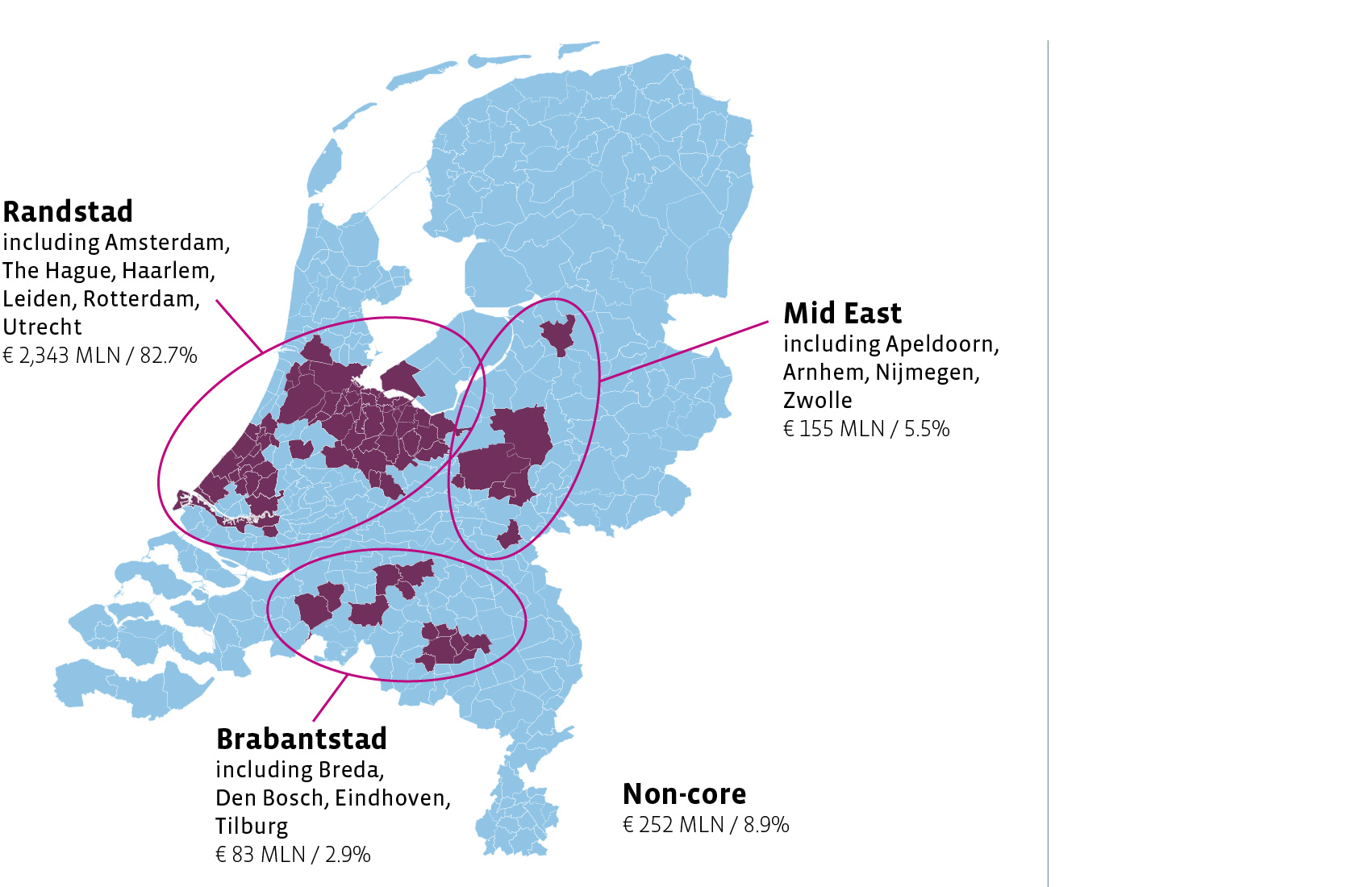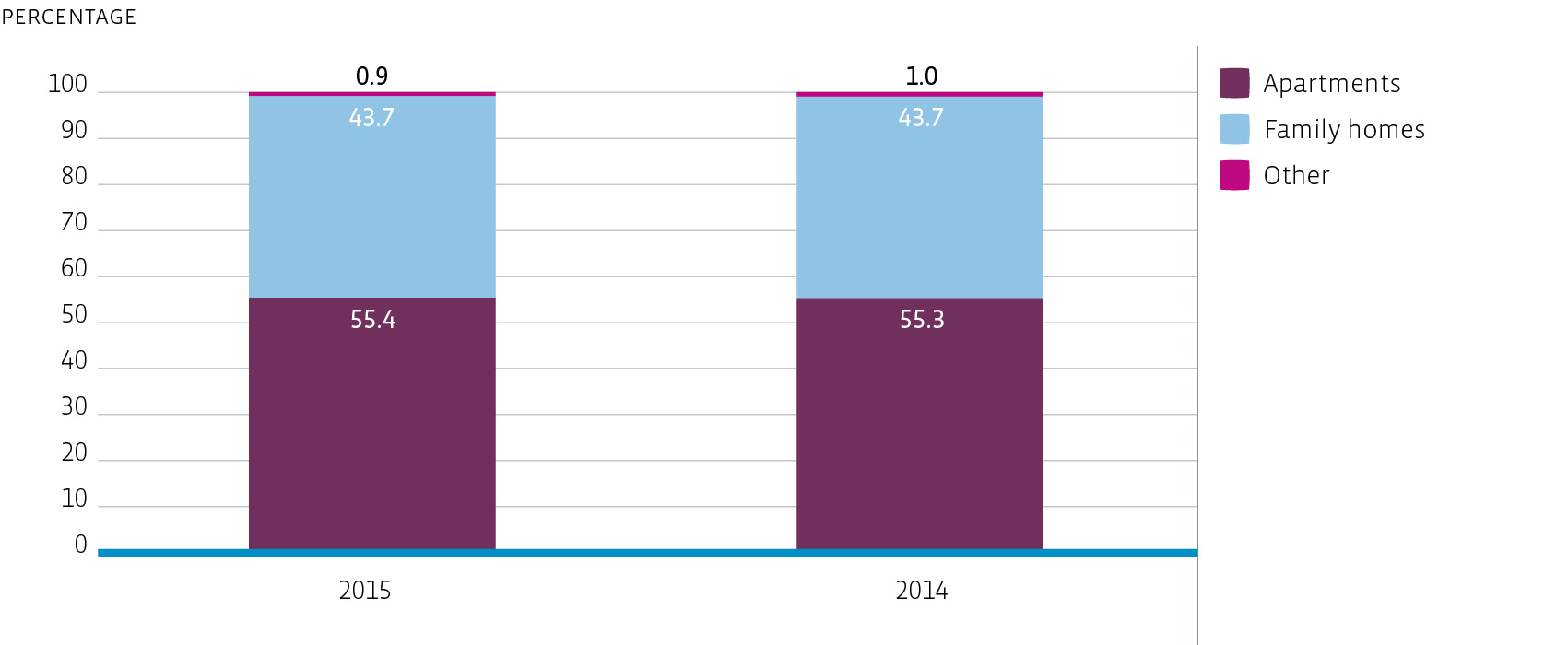Portfolio characteristics
€ 3.0 billion in Dutch residential properties
Core region policy with a focus on the Randstad conurbation and inner-city areas
Focus on the liberalised rental segment
Continuously high occupancy rate
Continuous outperformance of IPD property index
High percentage of green energy labels (A, B or C label)
GRESB Green Star
Diversified portfolio
When we are structuring our portfolio, we take into account the following diversification categories:
Core region policy
To identify the most attractive municipalities for residential investments, the Fund considers the following indicators:
The target is for at least 80.0% of the total portfolio value to be in investment properties in the Fund's core regions. This currently stands at 91.1%.
The Residential Fund's core regions based on book value

Major segments
To meet its own diversification guidelines, the Fund strives for a healthy balance of family homes and apartments.
Apartments
The Fund has a diversified portfolio of apartments, with floor plans designed to meet the wishes of the various target groups.
Family homes
The Fund’s family homes generally have floor plans and lay-outs that make them suitable for a large and varied target group.
Portfolio composition by type of property based on book value

Focus on liberalised rental sector
With an average monthly rent of € 966, the focus of the Fund continues to be on the mid-rental segment. The liberalised sector (rents of € 711 and above) is particularly interesting for the Fund because rent increases in this sector are not subject to government restrictions. In addition, the liberalised rental market has in recent years become more competitive vis-a-vis the owner-occupier market. Demand is growing and supply is lagging, especially in the Netherlands’ largest and most popular cities. This is widely recognised as the best residential sector in which to invest.
Portfolio composition by type of rent based on rental income
